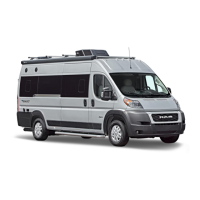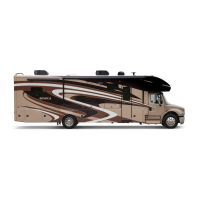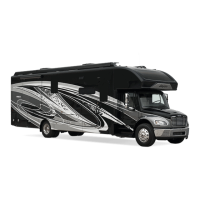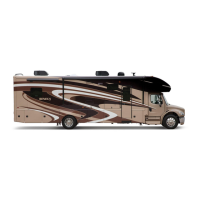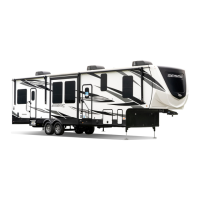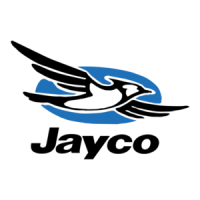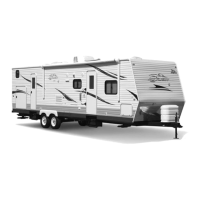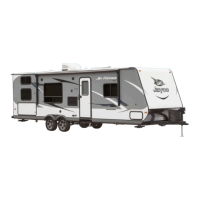15
Secondary Means of Escape
Your recreation vehicle has multiple means of escape in an emer-
gency. Exits include the rear doors, side sliding door and the front
driver/passenger doors. Make sure you are familiar with all exits and
create an exit plan in the event of an emergency. Exits are marked
with a red exit label.
Depending on your model, you may have an additional exit window. This win-
dow will allow a quick exit from the vehicle during an emergency if access
to the vehicle door(s) is not available. It is easily identied by the red latches
and the exit label. To operate this window, push the latches between the reds
marks towards each other and slide the window to the side. Practice opening
the window before an emergency occurs, and make sure all occupants know
how to operate it.
When parking your recreation vehicle, make sure the all (exit) doors and the
emergency exit window are not blocked by trees or other obstacles. Make sure
the ground below the window is solid and can be used as an escape path.
All windows must be closed and locked while the RV is in transit.
Fire Safety
If a re does start, follow these basic safety rules:
1. Call 911 and evacuate the vehicle immediately.
2. After everyone is accounted for, check the re to see if you can attempt to put it out.
3. If it is large, or the re is fuel-fed, get clear of the vehicle and have the Fire Department
handle the emergency.
4. Do not attempt to use water to put out the re. Water can spread some types of re, and
electrocution is possible with an electrical re.
Refer to the following sections for additional re safety information.
○ In case of an electrical re.
○ In case of a grease re.
Fire Extinguisher
Fire extinguishers are classied and rated by re type, A, B and C. These classications
identify the kinds of res or burning materials they are designed to ght.
Solid materials such as wood, paper, cloth, rubber and some plastics.
Class B - Liquids such as grease, cooking oils, gasoline, kerosene or other ammable liq-
uids.
Class C - Electrical such as electrical wires or other live electrical equipment.
A dry chemical re extinguisher has been installed by the entrance door. It is suitable for
extinguishing small res of the Class B or C type only.
We suggest you become thoroughly familiar with the operating instructions displayed on the
side of the re extinguisher.
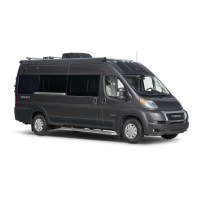
